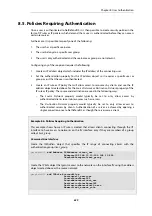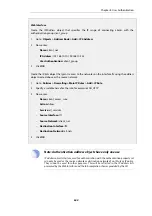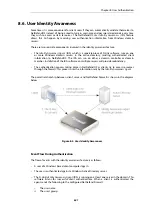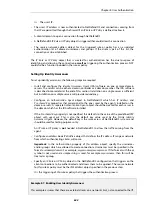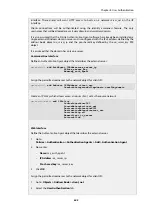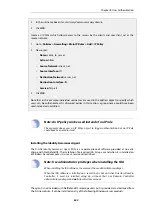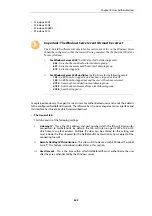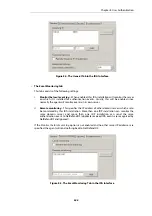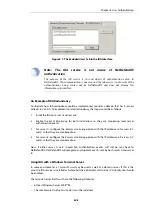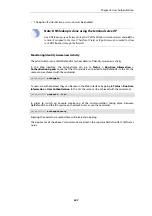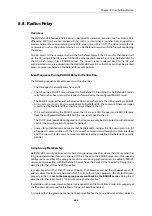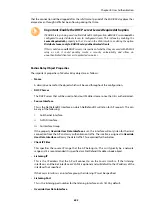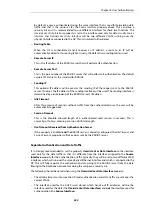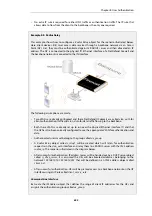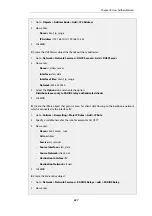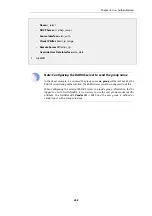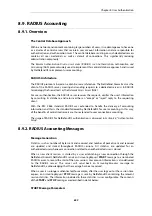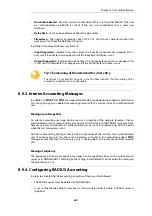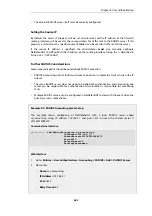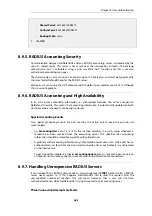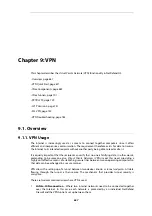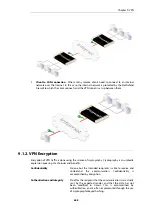
that the connection will be dropped after the
Idle Timeout
period of the
RADIUS Relay
object has
elapsed, even through traffic has been flowing during that time.
Important: Enable the DHCP server LeasesRequireAuth option
If RADIUS relay is being used in a NetDefendOS configuration,
all
DHCP servers
must
be
configured to only distribute leases to configured clients. This is done by enabling the
LeasesRequireAuth
property in the CLI and in the Web Interface, enabling the option
Distribute leases only to RADIUS relay authenticated clients
.
If this is not done on
all
DHCP servers, irrespective of whether they are used with RADIUS
relay or not, it could possibly create a security vulnerability and allow an
unauthenticated client access to protected resources.
Radius Relay Object Properties
The important properties of a
Radius Relay
object are as follows:
•
Name
A descriptive name for the object which will be used throughout the configuration.
•
DHCP Server
The DHCP server that will be used to hand out IP address leases once the UE is authenticated.
•
Source Interface
This is the NetDefendOS interface on which NetDefendOS will listen for AP requests. This can
be any of the following:
i.
An Ethernet interface.
ii.
A VLAN interface.
iii.
An Interface Group.
If the property Override User Data Interface is set, this interface will only listen for the intial
connection from the AP and carry authentication traffic. The interface assigned to Override
User Data Interface will carry the data traffic. This explained further below.
•
Client IP Filter
This specifies the source IP range that the AP belongs to. This will typically be a network
range and it is recommended it is specified as a NetDefendOS address book object.
•
Listening IP
This is the IP address that the AP will connect to on the
Source Interface
. If the listening
interface is an Ethernet interface or VLAN it is optional and will default to the IP address of the
interface if not specified.
If the
Source Interface
is an interface group, the listening IP must be specified.
•
Listening Port
This is the listening port number for the listening interface and is 1812 by default.
•
Override User Data Interface
Chapter 8: User Authentication
653
Summary of Contents for NetDefendOS
Page 30: ...Figure 1 3 Packet Flow Schematic Part III Chapter 1 NetDefendOS Overview 30 ...
Page 32: ...Chapter 1 NetDefendOS Overview 32 ...
Page 144: ...Chapter 2 Management and Maintenance 144 ...
Page 284: ...Chapter 3 Fundamentals 284 ...
Page 392: ...Chapter 4 Routing 392 ...
Page 419: ... Host 2001 DB8 1 MAC 00 90 12 13 14 15 5 Click OK Chapter 5 DHCP Services 419 ...
Page 420: ...Chapter 5 DHCP Services 420 ...
Page 573: ...Chapter 6 Security Mechanisms 573 ...
Page 607: ...Chapter 7 Address Translation 607 ...
Page 666: ...Chapter 8 User Authentication 666 ...
Page 775: ...Chapter 9 VPN 775 ...
Page 819: ...Chapter 10 Traffic Management 819 ...
Page 842: ...Chapter 11 High Availability 842 ...
Page 866: ...Default Enabled Chapter 13 Advanced Settings 866 ...
Page 879: ...Chapter 13 Advanced Settings 879 ...

